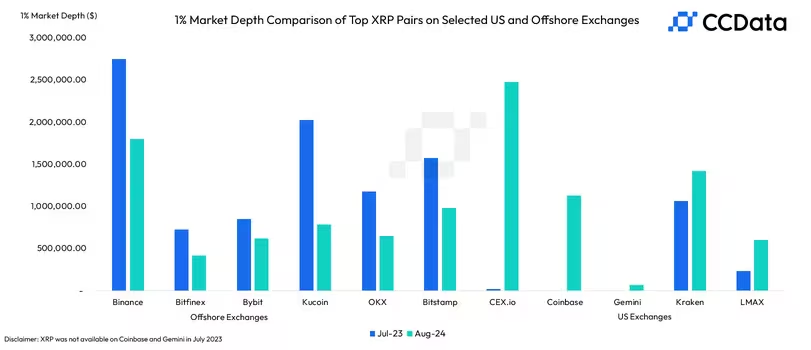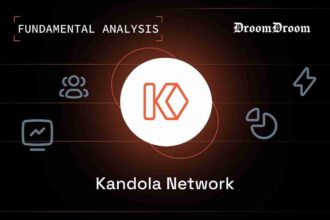Over the past decade, cryptocurrency markets have ascended from niche ecosystems into sophisticated networks where liquidity serves as the bedrock of stability. Liquidity is the ease of buying and selling without significant price changes. Executing large trades—often called “whale transactions”—requires liquidity that is not only deep but also seamlessly accessible.
- Understanding Large Trade Execution: The Elephant in the Market
- Innovative Liquidity Models: A New Wave in Execution
- Advancements Powering Liquidity Aggregation
- Bridging the Gap Between Centralized and Decentralized Exchanges
- Expanding Financial Instruments in DeFi
- Aggregated Liquidity Is A New Era in Large Trade Execution
However, liquidity in the crypto space is distributed across centralized exchanges (CEXs) and decentralized exchanges (DEXs) that creates unique challenges.
The concept of aggregated liquidity has emerged as a solution for this – pooling liquidity from multiple sources to activate the smooth execution of large trades with minimal price disruption.
Platforms like LogX serve as prime examples of this innovation, offering a centralized trading experience within a decentralized framework.
Understanding Large Trade Execution: The Elephant in the Market
Whale transactions—large trades by institutional investors or high-net-worth individuals—are often the driving force behind sudden shifts in cryptocurrency markets. These large trades influence market dynamics, liquidity, and volatility.
Market Influence and Volatility
“Markets are like oceans—what affects the waters in one part can send ripples across the globe,” says financial strategist J.D. Farmer in his 2024 study on market impact.
Liquidity, often measured by market depth, is the ability of an exchange to absorb large buy or sell orders without causing significant price fluctuations. When institutional investors or high-net-worth individuals execute large buy or sell orders, the ripple effect can be felt across the entire market.
For example, a large sell-off in Bitcoin can lead to a chain reaction, causing smaller traders to react, which in turn amplifies the market impact.
Large trades are akin to waves in the market—while a smaller trade may go unnoticed because a whale trade can disrupt the entire market dynamic. Without sufficient liquidity to absorb these trades, market prices can swing sharply, leading to instability.
Aggregated Liquidity: The Pillar of Stability
Without ample liquidity, even well-intentioned trades can wreak havoc. To minimize the impact of large trades, aggregated liquidity has become a key innovation in crypto trading.
Think of it as a sturdy bridge over turbulent waters—it ensures the trade doesn’t shake the market beneath it.

By pulling liquidity from various centralized exchanges, aggregated liquidity by platforms like LogX, as evidenced by its $21 billion total volume and 376,000+ transactions, ensures large trades meet little resistance, minimizing slippage and volatility.
Innovative Liquidity Models: A New Wave in Execution
“Don’t put all your eggs in one basket” rings especially true when executing whale-sized trades.
Historically, liquidity in crypto markets was fragmented across individual exchanges. This meant that a large trade on one exchange could cause major price fluctuations due to limited liquidity.
Aggregated liquidity, however, brings a solution by combining liquidity from multiple platforms into a single pool.
Think of it as a river fed by many streams. Instead of depending on one source, liquidity aggregators like LogX draw liquidity from multiple exchanges, allowing large trades to flow smoothly.
Smart Order Routing
To ensure that large trades are executed without overwhelming any one exchange, platforms like LogX use smart order routing.
Smart order routing system intelligently breaks large orders into smaller chunks and distributes them across different exchanges. This prevents a single platform from being overwhelmed, ensuring efficient and smooth execution of large trades.
Infinite Liquidity
An exciting innovation in this field is the idea of infinite liquidity. While no market can truly offer infinite liquidity, LogX comes close by pulling liquidity exclusively from centralized exchanges (CEXs). This is different from sourcing liquidity from DEXs or market makers, as LogX focuses entirely on CEX liquidity, which allows for deeper pools and faster execution times.
As the saying goes, “a rising tide lifts all boats”, and in this case, deeper liquidity pools help all traders execute their trades without fear of slippage.
Advancements Powering Liquidity Aggregation
Liquidity aggregation isn’t just about combining liquidity sources—it’s also about leveraging cutting-edge technologies to improve the speed, scalability, and efficiency of large trade executions.
Layer-2 Scaling for Faster Transactions
One of the most critical advancements driving better trade execution is the adoption of Layer-2 solutions. Platforms like Ethereum have brought these solutions forward for faster and more cost-effective trade executions by moving transactions off the main blockchain or using roll-up technologies.
In the context of large trade execution, speed is crucial.
LogX utilizes 30,000 TPS, 100ms latency, and gasless trading to provide a smooth trading experience, reducing fees and enhancing execution speed. Built to scale across 50+ blockchains, LogX ensures compatibility and broad market reach.

This is essential for high-volume traders who need to move quickly in a fast-paced market.
By adopting EVM-compatible chains like Arbitrum and Optimism, LogX makes sure that large trades can be processed without delays or high fees.
Cross-Chain Interoperability
Cross-chain interoperability is a testament to the fact that liquidity can flow freely across different networks. Traders no longer need to switch platforms to access liquidity on various blockchains like Ethereum, Solana, or Binance Smart Chain.
LogX enables chain-agnostic trading with a unified balance for traders to execute trades seamlessly without needing to manage separate balances on different blockchains.
In essence, cross-chain interoperability breaks down the walls that traditionally divided blockchain networks to create a more unified trading environment.
Gasless Transactions
“Time is money,” and with gasless transactions, traders save both.
Gas fees—once a significant hurdle in the execution of large trades—are no longer a concern for users of LogX. By subsidizing gas fees through its native token, $LOGX, the platform offers gasless trading, ensuring that traders can execute large orders without worrying about high transaction costs.
Bridging the Gap Between Centralized and Decentralized Exchanges
While both have their merits, the ability to bring together the liquidity depth of CEXs with the transparency and user control of DEXs has become a major innovation in liquidity aggregation.
Integrating CEX Liquidity into DEX Platforms
A major innovation in liquidity aggregation is the integration of CEX liquidity into DEX platforms.

As illustrated in the market depth comparison of XRP pairs, offshore exchanges like Binance tend to offer deeper liquidity, while US-based exchanges like Coinbase and Kraken also provide substantial liquidity.
While DEXs offer greater transparency and user control, they often lack the liquidity depth and speed of centralized exchanges. LogX solves this by aggregating liquidity exclusively from CEXs like Binance, OKX, and Coinbase. So as a trader you can benefit from the same deep liquidity pools and fast execution speeds offered by centralized exchanges — ultimately bridging the gap between the two worlds.
Achieving CEX-Like Performance in DeFi
DeFi is catching up to its centralized counterparts by leveraging advanced liquidity aggregation models. LogX have implemented smart order routing systems that ensure fast, CEX-level performance in a decentralized setting.
So DeFi platforms can now match the low latency and high throughput that centralized exchanges offer. This creates a seamless experience for traders who want the benefits of decentralization without compromising on speed or liquidity.
Expanding Financial Instruments in DeFi
With the combination of deep liquidity and innovative tools, DeFi is expanding its reach, attracting more institutional players and high-net-worth individuals looking to diversify their trading portfolios.
Leveraged Prediction Markets and Exotic Derivatives
Platforms like LogX are introducing innovative financial instruments such as leveraged prediction markets with up to 20x leverage, offering traders significant opportunities for amplified gains. These markets require deep liquidity to support large trades. Without sufficient liquidity, leveraged markets can become unstable, leading to price deviations that deter participation.

By aggregating liquidity from multiple sources, LogX ensures that its leveraged prediction markets run smoothly, offering traders an opportunity to engage in speculative trading without risking market disruptions.
Exotic Derivatives and Binary Options
LogX is also expanding into exotic derivatives and binary options, offering traders a more diverse range of financial products.
These instruments provide new opportunities for sophisticated trading strategies, attracting institutional investors who typically trade in larger volumes. By ensuring that liquidity is deep enough to handle these trades, LogX is creating a fertile ground for complex trading without significant price impacts.
Aggregated Liquidity Is A New Era in Large Trade Execution
The future of large trade execution in cryptocurrency markets is being shaped by aggregated liquidity.
Platforms like LogX demonstrate how pulling liquidity from multiple sources—CEXs, DEXs, and market makers—can create a more stable and efficient trading environment, even for large trades.
By bridging the gap between centralized and decentralized liquidity, LogX is paving the way for seamless, high-performance trades, ensuring that large transactions are handled with precision and minimal market impact. In a market known for its volatility, aggregated liquidity provides the steady hand traders need to steer through turbulent waters.



















